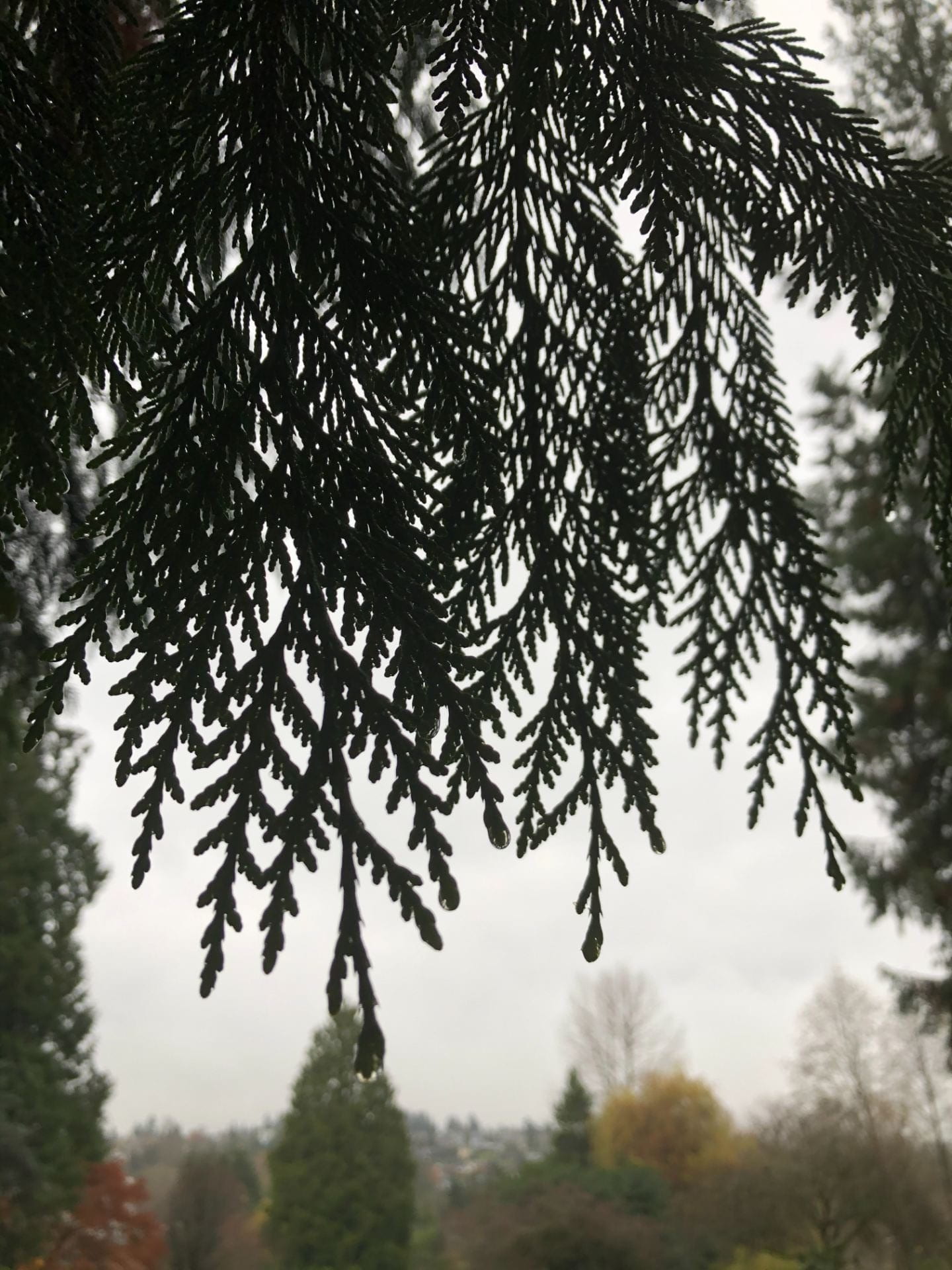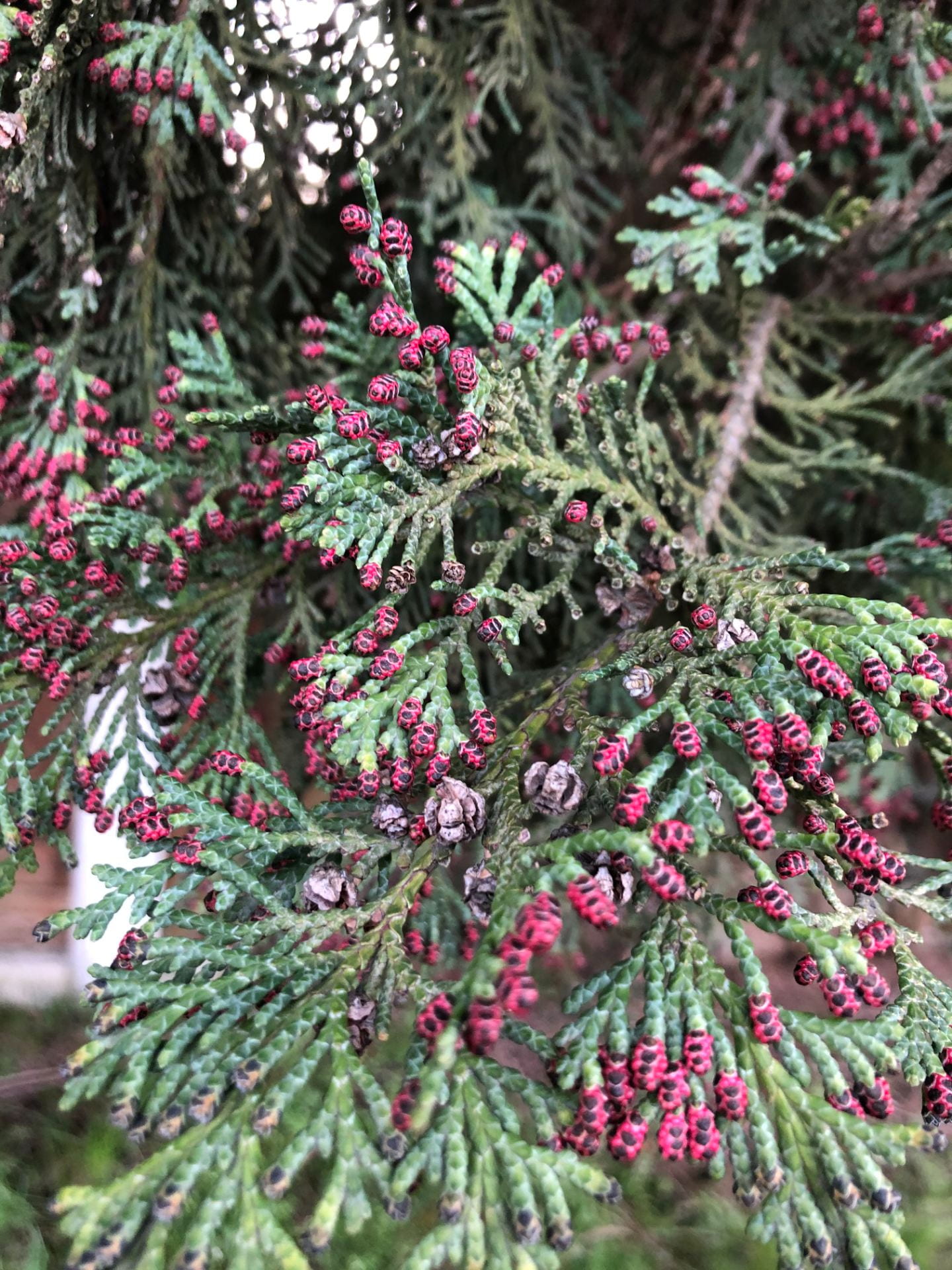Western Redcedar
Last updated November 19, 2020. All photos taken by the author.

Thuja plicata is our provincial tree and is very easy to find and identify once you know what to look for. It is known to live for over 1000 years and is a very important part of Northwest Coast aboriginal culture (more on that at the end of this post).
An evergreen with scales for leaves, mature western redcedar trees have characteristic stringy bark and flat drooping sprays of leaves. If you crush a few leaves and smell them they have a sweet odour reminiscent of Christmas and fresh forests.









Western redcedar is a conifer, meaning it reproduces by seeds protected during their development inside of cones. The cones are small with up to 12 scales.






Conifers drop at least some of their leaves every year. I have noticed that in late summer western redcedar tree leaves start to turn bright reddish brown and fall off.

Western redcedar is also one of the evergreens commonly called arborvitae, or tree of life. Arborvitae, in landscaping, are smaller tree varieties (shrubs or dwarf varieties) that are used for hedges or decor in containers. Go for a walk in a residential neighbourhood and you will likely see Thuja plicata arborvitae on every block. Like the grand wild trees, western redcedar arborvitae have the same leaves (scales), cones, and odour.



There are other evergreen conifers in our neighbourhood that you may mistake for western redcedar, but there are differences such as leaf shape, cone shape, bark, and odour.


Western redcedar trees were used extensively by British Columbia First Peoples whose territories included the range of this great tree. Bark, wood, roots, and boughs were all used for a variety of purposes. You are probably familiar with dugout canoes and totem poles, but western redcedar was used also for dishes, boxes, baskets, and clothing. (See Plant Technology of First Peoples in British Columbia by Nancy J. Turner for more information.)
So, head outside this week, or any week of the year, and find yourself a majestic western redcedar. Of all the species in our neighbourhood you should definitely learn to identify this one!
Books I used:
Native Trees of British Columbia, by Reese Halter et al., Global Forest-Pure Science, 2003, p. 60.
“Thuja Plicata.” Flora: over 20, 000 Plants and Their Cultivation Requirements, Firefly Books Ltd., 2003, p. 1413.
“Thuja Plicata.” Gardening with Native Plants of the Pacific Northwest, by Arthur R. Kruckeberg, University of Washington Press, 2019, p. 71.
“Thuja Plicata.” Vancouver Tree Book: a Living City Field Guide, by David Tracey, Pure Wave Media, 2016, pp. 46–47.
“Western Red-Cedar.” Plant Technology of First Peoples in British Columbia, by Nancy J. Turner, Royal British Columbia Museum, 2019, pp. 70–79.
“Western Redcedar.” Tree Book: Learning to Recognize Trees of British Columbia, by Roberta Parish and S. M. Thomson, Canadian Forest Service, 1994, pp. 16–19.